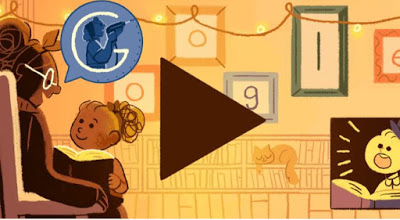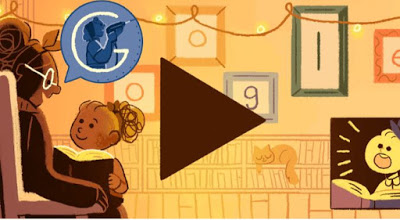Google is celebrating International Women's Day 2017 with a doodle, as this year marks the 40th anniversary of the UN resolution that established March XNUMX as International Women's Day and International Peace.
Google has selected women pioneers who have paved the way for where we are today.
It starts with a little girl whose grandmother tells her best story just before bed. The story of her favorite heroine. The little girl then visits 13 remarkable women in her imagination, embarking on a journey that spans centuries and travels the world.
The Google doodle and the announcement for its publication star:
Ida Wells
American journalist, civil rights activist
Lotfia El Nadi
The first female pilot of Egypt
Frida Kahlo
Mexican painter and activist
Lina Bo Bardi
Italian architect
Olga Skorokhodova
Soviet scientist and researcher in the field of communication for the deaf and blind
Miriam Makeba
South African singer and civil rights activist
Sally ride
American astronaut
Hallett Campbell
Tourkala archaeologist and the first Muslim woman at the Olympic Games
Ada Lovelace
English mathematician, author, and the world's first computer programmer
Rukmini Devi
Indian dancer and choreographer credited with reviving Indian classical dance
Cecilia Grierson
The first woman in Argentina to receive a medical degree
Lee Tai-young
Lawyer and activist who was the first female lawyer and judge in Korea
Suzanne Lenglen
French tennis champion who spread the sport
International Women's Day is celebrated on March 8
It is a day of mobilizations around the world to support equality, and to value the position of women in society. Traditionally, women's rights associations and activists have been protesting around the world to make their demands known for the betterment of women, as well as to celebrate the movement's victories and achievements.
On the occasion of International Women's Day (March 8), Unicef points out that girls face much greater barriers to going to school, experience violence and abuse from loved ones, and live with the consequences of harmful practices such as genital mutilation. instruments or child marriage and other serious violations of their rights.
In particular, adolescent girls, who now account for almost two in three new HIV infections in their age group, need to be approached with options for prevention and treatment. One in four girls is still married as a child and the practice of female genital mutilation continues to spread in some countries. Gender discrimination and social norms prevail in many parts of the world, degrading girls to a lower social status, even within their own families. They leave them vulnerable to exploitation and violence, which is an obstacle to promoting peaceful and inclusive societies, according to a Unicef report.
Today, 32 million girls are out of primary school and 29 million out of lower secondary school. While more than two-thirds of countries have achieved gender equality in primary education, less than half have achieved equality in secondary education. The largest gender disparities are found in West and Central Africa, where only 79 girls are enrolled in secondary education for every 100 boys.
Source: newsbeast.gr

